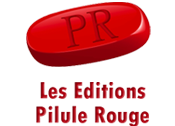Las muchas maneras en las que el azúcar daña su salud
Nancy Appleton, PhD
dietametabólica.com
Traducción de Mónica Gómez Santos
29/12/09
Además de desequilibrar la homeostasis del cuerpo, el exceso de azúcar puede acarrear otras consecuencias de importancia. La siguiente lista incluye algunos de los efectos metabólicos del azúcar recogidos de diferentes revistas médicas y otras publicaciones científicas.
...Siga leyendo, haciendo click en el título...
1. El azúcar puede inhibir el sistema inmunológico y debilitar las defensas contra las enfermedades infecciosas.
2. El azúcar destruye el equilibrio de los minerales en el cuerpo: provoca deficiencias de cobre y de cromo, e interfiere con la absorción de calcio y de magnesio.
3. El azúcar provoca una subida rápida de adrenalina, hiperactividad, ansiedad, dificultad para concentrarse e irritabilidad en niños.
4. El azúcar puede producir un aumento significativo del colesterol total y triglicéridos, así como un aumento del colesterol malo y un descenso del bueno.
5. El azúcar causa una pérdida de elasticidad y de funcionalidad de los tejidos.
6. El azúcar sirve de alimento a las células cancerígenas y se le ha relacionado con el desarrollo de cáncer de pecho, ovarios, próstata, recto, páncreas, tracto biliario, pulmones, vesícula biliar y estómago.
7. El azúcar puede aumentar los niveles de glucosa en ayunas, y provocar hipoglucemia reactiva.
8. El azúcar puede debilitar la vista.
9. El azúcar puede causar muchos problemas con el tracto gastrointestinal como: acidez, indigestión, mala absorción en pacientes con problemas intestinales, incremento del riesgo de la enfermedad de Crohn y colitis ulcerosa.
10. El azúcar puede causar envejecimiento prematuro.
11. El azúcar puede llevar al alcoholismo.
12. El azúcar puede provocar caries, gengivitis y que la saliva se vuelva ácida.
13. El azúcar contribuye a la obesidad.
14. El azúcar puede ser la causa de enfermedades auto inmunes como artritis, asma y esclerosis múltiple.
15. El azúcar favorece el crecimiento descontrolado de la levadura Candida Albicans (infecciones por hongos).38 16. El azúcar puede producir piedras en la vesícula.
17. El azúcar puede producir apendicitis.
18. El azúcar puede provocar hemorroides.
19. El azúcar puede causar varices.
20. El azúcar puede elevar la respuesta de la glucosa y de la insulina cuando se usa la píldora anticonceptiva.
21. El azúcar contribuye a la osteoporosis.
22. El azúcar puede provocar un descenso en la sensibilidad a la insulina, lo que se traduce en niveles anormalmente altos de insulina, y en última instancia, diabetes.
23. El azúcar puede provocar un descenso en los niveles de vitamina E.
24. El azúcar puede incrementar la presión sanguínea sistólica.
25. El azúcar puede provocar aletargamiento y disminución de la actividad en los niños.
26. Una ingesta elevada de azúcar incrementa los productos de glicación avanzada (proceso en el que las moléculas de azúcar se adhieren a las proteínas del cuerpo dañándolas)
27. El azúcar puede interferir en la absorción de proteínas.
28. El azúcar provoca alergias alimentarias.
29. El azúcar puede provocar toxemia durante el embarazo.
30. El azúcar puede contribuir a la aparición de ezcema en niños.
31. El azúcar can cause atherosclerosis and cardiovascular disease.
32. El azúcar puede dañar la estructura del DNA.
33. El azúcar pude cambiar la estructura de la proteína y causar una alteración permanente de la manera en la que actúan las proteínas en el cuerpo.
34. El azúcar puede hacer que la piel envejezca debido a los cambios que provoca en la estructura del colágeno.
35. El azúcar puede provocar cataratas y miopía.
36. El azúcar puede provocar efisema.
37. Un alto consumo de azúcar puede desestabilizar la homeostasis fisiológica de los distintos sistemas del cuerpo.
38. El azúcar reduce la capacidad de funcionamiento de las enzimas.
39. La ingesta de azúcar es más elevada en personas que padecen de Parkinson.
40. El azúcar puede aumentar el tamaño del hígado haciendo que las células del hígado se dividan y puede incrementar la cantidad de grasa en el hígado.
41. El azúcar puede aumentar el tamaño del riñón y provocar cambios patológicos en el mismo, como la formación de piedras.
42. El azúcar puede dañar al páncreas.
43. El azúcar puede incrementar la retención de fluidos en el cuerpo.
44. El azúcar es el enemigo número 1 de la motilidad intestinal.
45. El azúcar puede dañar el recubrimiento interno de los capilares.
46. El azúcar puede hacer que los tendones sean más frágiles.
47. El azúcar puede provocar dolores de cabeza, incluyendo migrañas.
48. El azúcar puede reducir la capacidad de aprendizaje, afectar adversamente las notas de los niños y provocar problemas de aprendizaje.
49. El azúcar puede provocar un incremento en las ondas cerebrales delta, alpha, y theta, lo que puede alterar la capacidad de la mente de pensar claramente.
50. El azúcar puede causar depresión.
51. El azúcar puede incrementar el riesgo de padecer gota.
52. El azúcar puede incrementar el riesgo de padecer Alzheimer.
53. El azúcar puede provocar desequilibrios hormonales como: elevado estrógeno en los hombres, síndrome premestrual y disminución de la hormona del crecimiento.
54. El azúcar puede provocar vertigos y mareos.
55. Dietas altas en azúcar incrementan los radicales libres y el estrés oxidativo.
56. Niveles altos de sucrosa en personas con enfermedades vasculares periféricas incrementan de forma significativa la adhesión de las plaquetas.
57. Un alto consumo de azúcar en las adolescentes embarazadas puede conducir a una gestación de duración reducida y está asociada con un incremento del doble en el riesgo de dar a luz a un bebé de bajo peso.
58. El azúcar es una sustancia adictiva.
59. El azúcar puede intoxicar de la misma manera que el alcohol.
60. La ingesta de azúcar en bebés prematuros puede afectar a la cantidad de dióxido de carbono que producen. 61. Reducir el consumo de azúcar puede incrementar la estabilidad emocional.
62. El cuerpo transforma el azúcar en grasa de 2 a 5 veces más que con el almidón.
63. La rápida absorción del azúcar promueve una excesiva ingesta de alimentos en las personas obesas.
64. El azúcar puede empeorar los síntomas de los niños con el síndrome de hiperactividad y de deficiencia de atención (ADHD).
65. El azúcar afecta negativamente la composición de electrolitos de la orina.
66. El azúcar puede disminuye la capacidad de funcionamiento de las glándulas suprarrenales.
67. El azúcar tiene el poder de inducir procesos metabólicos anormales en un individuo saludable, y promover enfermedades crónicas degenerativas.
68. I.V.s (alimentación intravenosa) de agua con azúcar puede interrumpir el flujo de oxígeno al cerebro. 69. El azúcar incrementa el riesgo de padecer polio.
70. Un alto consumo de azúcar puede inducir crisis epilécticas.
71. El azúcar causes high blood pressure in obese people.
72. En las unidades de cuidados intensivos: limitar el azúcar salva vidas.
73. El azúcar pude inducir muerte celular.
74. En los reformatorios que siguieron una dieta baja en azúcar el comportamiento antisocial descendió en un 44 por ciento.
75. El azúcar deshidrata a los recién nacidos.
76. El azúcar causa problemas en las encías.
Referencias:
Sanchez, A., et al. Role of Sugars in Human Neutrophilic Phagocytosis, American Journal of Clinical Nutrition. Nov 1973;261:1180_1184. Bernstein, J., al. Depression of Lymphocyte Transformation Following Oral Glucose Ingestion. American Journal of Clinical Nutrition.1997;30:613
Ringsdorf, W., Cheraskin, E. and Ramsay R. Sucrose, Neutrophilic Phagocytosis and Resistance to Disease, Dental Survey. 1976;52(12):46_48.
Couzy, F., et al. "Nutritional Implications of the Interaction Minerals," Progressive Food and Nutrition Science 17;1933:65-87
Kozlovsky, A., et al. Effects of Diets High in Simple Sugars on Urinary Chromium Losses. Metabolism. June 1986;35:515_518.
Fields, M.., et al. Effect of Copper Deficiency on Metabolism and Mortality in Rats Fed Sucrose or Starch Diets, Journal of Clinical Nutrition. 1983;113:1335_1345.
Lemann, J. Evidence that Glucose Ingestion Inhibits Net Renal Tubular Reabsorption of Calcium and Magnesium. Journal of Clinical Nutrition. 1976 ;70:236_245.
Goldman, J., et al. Behavioral Effects of Sucrose on Preschool Children. Journal of Abnormal Child Psychology.1986;14(4):565_577.
Jones, T. W., et al. Enhanced Adrenomedullary Response and Increased Susceptibility to Neuroglygopenia: Mechanisms Underlying the Adverse Effect of Sugar Ingestion in Children. Journal of Pediatrics. Feb 1995;126:171-7.
Scanto, S. and Yudkin, J. The Effect of Dietary Sucrose on Blood Lipids, Serum Insulin, Platelet Adhesiveness and Body Weight in Human Volunteers, Postgraduate Medicine Journal. 1969;45:602_607.
Albrink, M. and Ullrich I. H. Interaction of Dietary Sucrose and Fiber on Serum Lipids in Healthy Young Men Fed High Carbohydrate Diets. American Journal of Clinical Nutrition. 1986;43:419-428. Pamplona, R., et al. Mechanisms of Glycation in Atherogenesis. Med Hypotheses. Mar 1993;40(3):174-81.
Reiser, S. Effects of Dietary Sugars on Metabolic Risk Factors Associated with Heart Disease. Nutritional Health. 1985;203_216.
Lewis, G. F. and Steiner, G. Acute Effects of Insulin in the Control of Vldl Production in Humans. Implications for The insulin-resistant State. Diabetes Care. 1996 Apr;19(4):390-3 R. Pamplona, M. .J., et al. Mechanisms of Glycation in Atherogenesis. Medical Hypotheses. 1990;40:174-181.
Cerami, A., Vlassara, H., and Brownlee, M. "Glucose and Aging." Scientific American. May 1987:90. Lee, A. T. and Cerami, A. The Role of Glycation in Aging. Annals of the New York Academy of Science; 663:63-67.
Takahashi, E., Tohoku University School of Medicine, Wholistic Health Digest. October 1982:41:00
Quillin, Patrick, Cancer's Sweet Tooth, Nutrition Science News. Ap 2000 Rothkopf, M.. Nutrition. July/Aug 1990;6(4).
Michaud, D. Dietary Sugar, Glycemic Load, and Pancreatic Cancer Risk in a Prospective Study. J Natl Cancer Inst. Sep 4, 2002 ;94(17):1293-300.
Moerman, C. J., et al. Dietary Sugar Intake in the Etiology of Biliary Tract Cancer. International Journal of Epidemiology. Ap 1993.2(2):207-214.
The Edell Health Letter. Sept 1991;7:1.
De Stefani, E."Dietary Sugar and Lung Cancer: a Case control Study in Uruguay." Nutrition and Cancer. 1998;31(2):132_7.
Cornee, J., et al. A Case-control Study of Gastric Cancer and Nutritional Factors in Marseille, France. European Journal of Epidemiology 11 (1995):55-65.
Kelsay, J., et al. Diets High in Glucose or Sucrose and Young Women. American Journal of Clinical Nutrition. 1974;27:926_936. Thomas, B. J., et al. Relation of Habitual Diet to Fasting Plasma Insulin Concentration and the Insulin Response to Oral Glucose, Human Nutrition Clinical Nutrition. 1983; 36C(1):49_51.
Dufty, William. Sugar Blues. (New York:Warner Books, 1975).
Acta Ophthalmologica Scandinavica. Mar 2002;48;25. Taub, H. Ed. Sugar Weakens Eyesight, VM NEWSLETTER;May 1986:06:00
Dufty.
Yudkin, J. Sweet and Dangerous.(New York:Bantam Books,1974) 129
Cornee, J., et al. A Case-control Study of Gastric Cancer and Nutritional Factors in Marseille, France, European Journal of Epidemiology. 1995;11
Persson P. G., Ahlbom, A., and Hellers, G. Epidemiology. 1992;3:47-52.
Jones, T. W., et al. Enhanced Adrenomedullary Response and Increased Susceptibility to Neuroglygopenia: Mechanisms Underlying the Adverse Effect of Sugar Ingestion in Children. Journal of Pediatrics. Feb 1995;126:171-7.
Lee, A. T.and Cerami A. The Role of Glycation in Aging. Annals of the New York Academy of Science.1992;663:63-70.
Abrahamson, E. and Peget, A. Body, Mind and Sugar. (New York: Avon, 1977.}
Glinsmann, W., Irausquin, H., and Youngmee, K. Evaluation of Health Aspects of Sugar Contained in Carbohydrate Sweeteners. F. D. A. Report of Sugars Task Force. 1986:39:00 Makinen K.K.,et al. A Descriptive Report of the Effects of a 16_month Xylitol Chewing_gum Programme Subsequent to a 40_month Sucrose Gum Programme. Caries Research. 1998; 32(2)107_12.
Glinsmann, W., Irausquin, H., and K. Youngmee. Evaluation of Health Aspects of Sugar Contained in Carbohydrate Sweeteners. F. D. A. Report of Sugars Task Force.1986;39:36_38.
Appleton, N. New York: Healthy Bones. Avery Penguin Putnam:1989.
Keen, H., et al. Nutrient Intake, Adiposity, and Diabetes. British Medical Journal. 1989; 1:00 655_658
Darlington, L., Ramsey, N. W. and Mansfield, J. R. Placebo Controlled, Blind Study of Dietary Manipulation Therapy in Rheumatoid Arthritis, Lancet. Feb 1986;8475(1):236_238.
Powers, L. Sensitivity: You React to What You Eat. Los Angeles Times. (Feb. 12, 1985). Cheng, J., et al. Preliminary Clinical Study on the Correlation Between Allergic Rhinitis and Food Factors. Lin Chuang Er Bi Yan Hou Ke Za Zhi Aug 2002;16(8):393-396.
Erlander, S. The Cause and Cure of Multiple Sclerosis, The Disease to End Disease." Mar 3, 1979;1(3):59_63.
Crook, W. J. The Yeast Connection. (TN:Professional Books, 1984).
Heaton, K. The Sweet Road to Gallstones. British Medical Journal. Apr 14, 1984; 288:00:00 1103_1104. Misciagna, G., et al. American Journal of Clinical Nutrition. 1999;69:120-126.
Cleave, T. The Saccharine Disease. (New Canaan, CT: Keats Publishing, 1974).
Cleave, T. and Campbell, G. (Bristol, England:Diabetes, Coronary Thrombosis and the Saccharine Disease: John Wright and Sons, 1960).
Behall, K. Influ ence of Estrogen Content of Oral Contraceptives and Consumption of Sucrose on Blood Parameters. Disease Abstracts International. 1982;431437.
Tjäderhane, L. and Larmas, M. A High Sucrose Diet Decreases the Mechanical Strength of Bones in Growing Rats. Journal of Nutrition. 1998:128:1807_1810.
Beck, Nielsen H., Pedersen O., and Schwartz S. Effects of Diet on the Cellular Insulin Binding and the Insulin Sensitivity in Young Healthy Subjects. Diabetes. 1978;15:289_296 .
Sucrose Induces Diabetes in Cat. Federal Protocol. 1974;6(97). diabetes
Reiser, S., et al. Effects of Sugars on Indices on Glucose Tolerance in Humans. American Journal of Clinical Nutrition. 1986;43:151-159.
Journal of Clinical Endocrinology and Metabolism. Aug 2000
Hodges, R., and Rebello, T. Carbohydrates and Blood Pressure. Annals of Internal Medicine. 1983:98:838_841.
Behar, D., et al. Sugar Challenge Testing with Children Considered Behaviorally Sugar Reactive. Nutritional Behavior. 1984;1:277_288.
Furth, A. and Harding, J. Why Sugar Is Bad For You. New Scientist. Sep 23, 1989;44.
Simmons, J. Is The Sand of Time Sugar? LONGEVITY. June 1990:00:00 49_53.
Appleton, N. New York: LICK THE SUGAR HABIT. Avery Penguin Putnam:1988. allergies
Cleave, T. The Saccharine Disease: (New Canaan Ct: Keats Publishing, Inc., 1974).131.
Pamplona, R., et al. Mechanisms of Glycation in Atherogenesis. Medical Hypotheses . 1990:00:00 174_181.
Vaccaro O., Ruth, K. J. and Stamler J. Relationship of Postload Plasma Glucose to Mortality with 19 yr Follow up. Diabetes Care. Oct 15,1992;10:328_334. Tominaga, M., et al, Impaired Glucose Tolerance Is a Risk Factor for Cardiovascular Disease, but Not Fasting Glucose. Diabetes Care. 1999:2(6):920-924.
Lee, A. T. and Cerami, A. Modifications of Proteins and Nucleic Acids by Reducing Sugars: Possible Role in Aging. Handbook of the Biology of Aging. (New York: Academic Press, 1990.).
Monnier, V. M. Nonenzymatic Glycosylation, the Maillard Reaction and the Aging Process. Journal of Gerontology 1990:45(4):105_110.
Cerami, A., Vlassara, H., and Brownlee, M. Glucose and Aging. Scientific American. May 1987:00:00 90
Dyer, D. G., et al. Accumulation of Maillard Reaction Products in Skin Collagen in Diabetes and Aging. Journal of Clinical Investigation. 1993:93(6):421_22.
Veromann, S.et al."Dietary Sugar and Salt Represent Real Risk Factors for Cataract Development." Ophthalmologica. 2003 Jul-Aug;217(4):302-307.
Goulart, F. S. Are You Sugar Smart? American Fitness. March_April 1991:00:00 34_38. Milwakuee, WI
Monnier, V. M. Nonenzymatic Glycosylation, the Maillard Reaction and the Aging Process. Journal of Gerontology. 1990:45(4):105_110.
Ceriello, A. Oxidative Stress and Glycemic Regulation. Metabolism. Feb 2000;49(2 Suppl 1):27-29.
Appleton, Nancy. New York; Lick the Sugar Habit. Avery Penguin Putnam, 1988 enzymes
Hellenbrand, W. Diet and Parkinson's Disease. A Possible Role for the Past Intake of Specific Nutrients. Results from a Self-administered Food-frequency Questionnaire in a Case-control Study. Neurology. Sep 1996;47(3):644-650.
Goulart, F. S. Are You Sugar Smart? American Fitness. March_April 1991:00:00 34_38.
Yudkin, J., Kang, S. and Bruckdorfer, K. Effects of High Dietary Sugar. British Journal of Medicine. Nov 22, 1980;1396.
Blacklock, N. J., Sucrose and Idiopathic Renal Stone. Nutrition and Health. 1987;5(1-2):9- Curhan, G., et al. Beverage Use and Risk for Kidney Stones in Women. Annals of Internal Medicine. 1998:28:534-340.
Goulart, F. S. Are You Sugar Smart? American Fitness. March_April 1991:00:00 34_38. Milwakuee, WI,:
Ibid. fluid retention
Ibid. bowel movement
Ibid. compromise the lining of the capillaries
Nash, J. Health Contenders. Essence. Jan 1992; 23:00 79_81.
Grand, E. Food Allergies and Migraine.Lancet. 1979:1:955_959.
Schauss, A. Diet, Crime and Delinquency. (Berkley Ca; Parker House, 1981.)
Molteni, R, et al. A High-fat, Refined Sugar Diet Reduces Hippocampal Brain-derived Neurotrophic Factor, Neuronal Plasticity, and Learning. NeuroScience. 2002;112(4):803-814.
Christensen, L. The Role of Caffeine and Sugar in Depression. Nutrition Report. Mar 1991;9(3):17-24.
Ibid,44
Yudkin, J. Sweet and Dangerous.(New York:Bantam Books,1974) 129
Frey, J. Is There Sugar in the Alzheimer's Disease? Annales De Biologie Clinique. 2001; 59 (3):253-257.
Yudkin, J. Metabolic Changes Induced by Sugar in Relation to Coronary Heart Disease and Diabetes. Nutrition and Health. 1987;5(1-2):5-8.
Yudkin, J and Eisa, O. Dietary Sucrose and Oestradiol Concentration in Young Men. Annals of Nutrition and Metabolism. 1988:32(2):53-55.
The Edell Health Letter. Sept 1991;7:1.
Gardner, L. and Reiser, S. Effects of Dietary Carbohydrate on Fasting Levels of Human Growth Hormone and Cortisol. Proceedings of the Society for Experimental Biology and Medicine. 1982;169:36_40.
Journal of Advanced Medicine. 1994;7(1):51-58.
Ceriello, A. Oxidative Stress and Glycemic Regulation. Metabolism. Feb 2000;49(2 Suppl 1):27-29.
Postgraduate Medicine.Sept 1969:45:602-07.
Lenders, C. M. Gestational Age and Infant Size at Birth Are Associated with Dietary Intake among Pregnant Adolescents. Journal of Nutrition. Jun 1997;1113- 1117
Sugar, White Flour Withdrawal Produces Chemical Response. The Addiction Letter. Jul 1992:04:00 Colantuoni, C., et al. Evidence That Intermittent, Excessive Sugar Intake Causes Endogenous Opioid Dependence. Obes Res. Jun 2002 ;10(6):478-488. Annual Meeting of the American Psychological Society, Toronto, June 17, 2001 www.mercola.com/2001/jun/30/sugar.htm
Sunehag, A. L., et al. Gluconeogenesis in Very Low Birth Weight Infants Receiving Total Parenteral Nutrition Diabetes. 1999 ;48 7991_800.
Christensen L., et al. Impact of A Dietary Change on Emotional Distress. Journal of Abnormal Psychology.1985;94(4):565_79.
Nutrition Health Review. Fall 85 changes sugar into fat faster than fat
Ludwig, D. S., et al. High Glycemic Index Foods, Overeating and Obesity. Pediatrics. March 1999;103(3):26-32.
Pediatrics Research. 1995;38(4):539-542. Berdonces, J. L. Attention Deficit and Infantile Hyperactivity. Rev Enferm. Jan 2001;4(1)11-4
Blacklock, N. J. Sucrose and Idiopathic Renal Stone. Nutrition Health. 1987;5(1 & 2):9-
Lechin, F., et al. Effects of an Oral Glucose Load on Plasma Neurotransmitters in Humans. Neurophychobiology. 1992;26(1-2):4-11.
Fields, M. Journal of the American College of Nutrition. Aug 1998;17(4):317_321.
Arieff, A. I. Veterans Administration Medical Center in San Francisco. San Jose Mercury; June 12/86. IVs of sugar water can cut off oxygen to the brain.
Sandler, Benjamin P. Diet Prevents Polio. Milwakuee, WI,:The Lee Foundation for for Nutritional Research, 1951
Murphy, Patricia. The Role of Sugar in Epileptic Seizures. Townsend Letter for Doctors and Patients. May, 2001 Murphy Is Editor of Epilepsy Wellness Newsletter, 1462 West 5th Ave., Eugene, Oregon 97402
Stern, N. & Tuck, M. Pathogenesis of Hypertension in Diabetes Mellitus. Diabetes Mellitus, a Fundamental and Clinical Test. 2nd Edition, (PhiladelphiA; A:Lippincott Williams & Wilkins, 2000)943-957.
Christansen, D. Critical Care: Sugar Limit Saves Lives. Science News. June 30, 2001; 159:404.
Donnini, D. et al. Glucose May Induce Cell Death through a Free Radical-mediated Mechanism.Biochem Biohhys Res Commun. Feb 15, 1996:219(2):412-417.
Schoenthaler, S. The Los Angeles Probation Department Diet-Behavior Program: Am Empirical Analysis of Six Institutional Settings. Int J Biosocial Res 5(2):88-89.
Gluconeogenesis in Very Low Birth Weight Infants Receiving Total Parenteral Nutrition. Diabetes. 1999 Apr;48(4):791-800.
Glinsmann, W., et al. Evaluation of Health Aspects of Sugar Contained in Carbohydrate Sweeteners." FDA Report of Sugars Task Force -1986 39 123 Yudkin, J. and Eisa, O. Dietary Sucrose and Oestradiol Concentration in Young Men. Annals of Nutrition and Metabolism. 1988;32(2):53-5.













0 comentarios:
Publicar un comentario